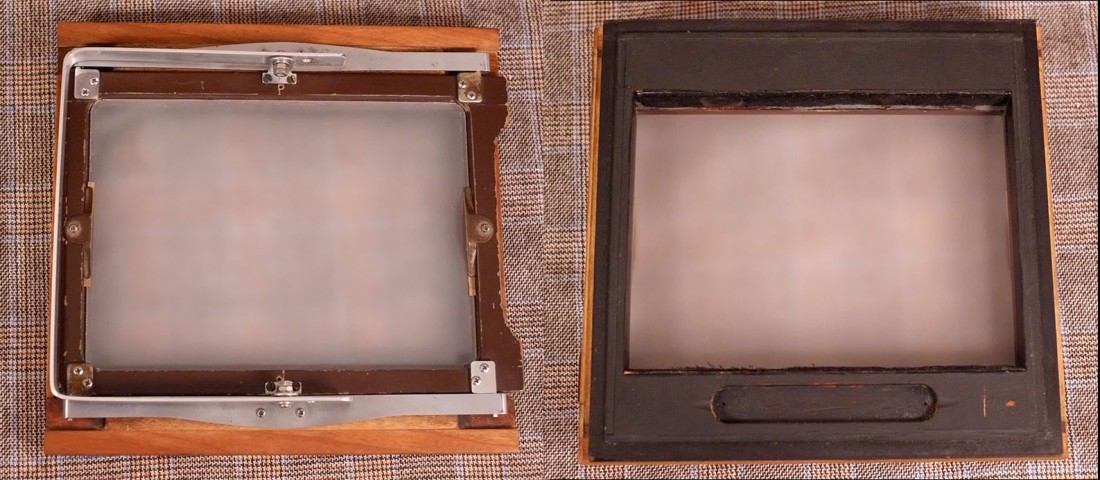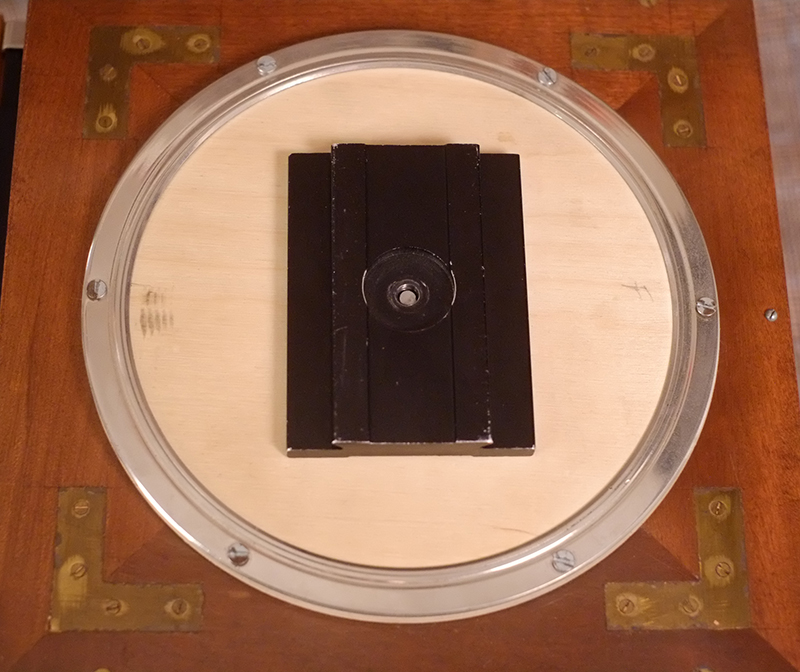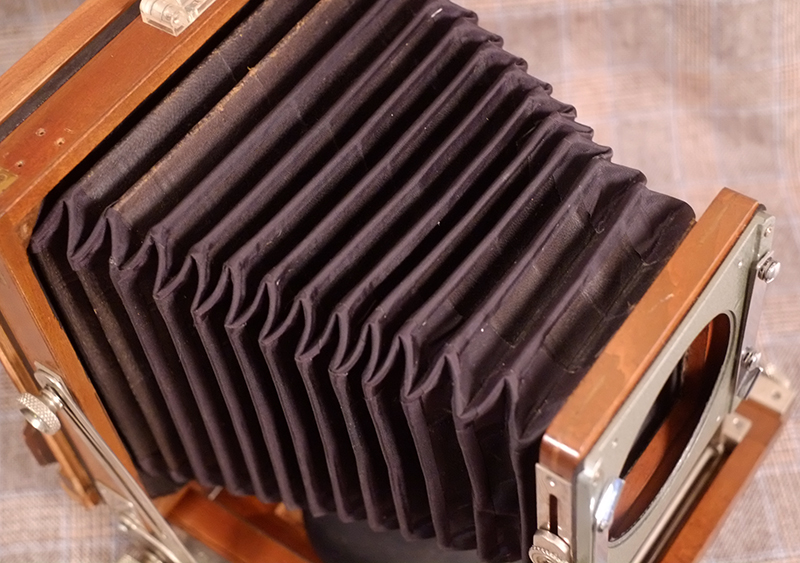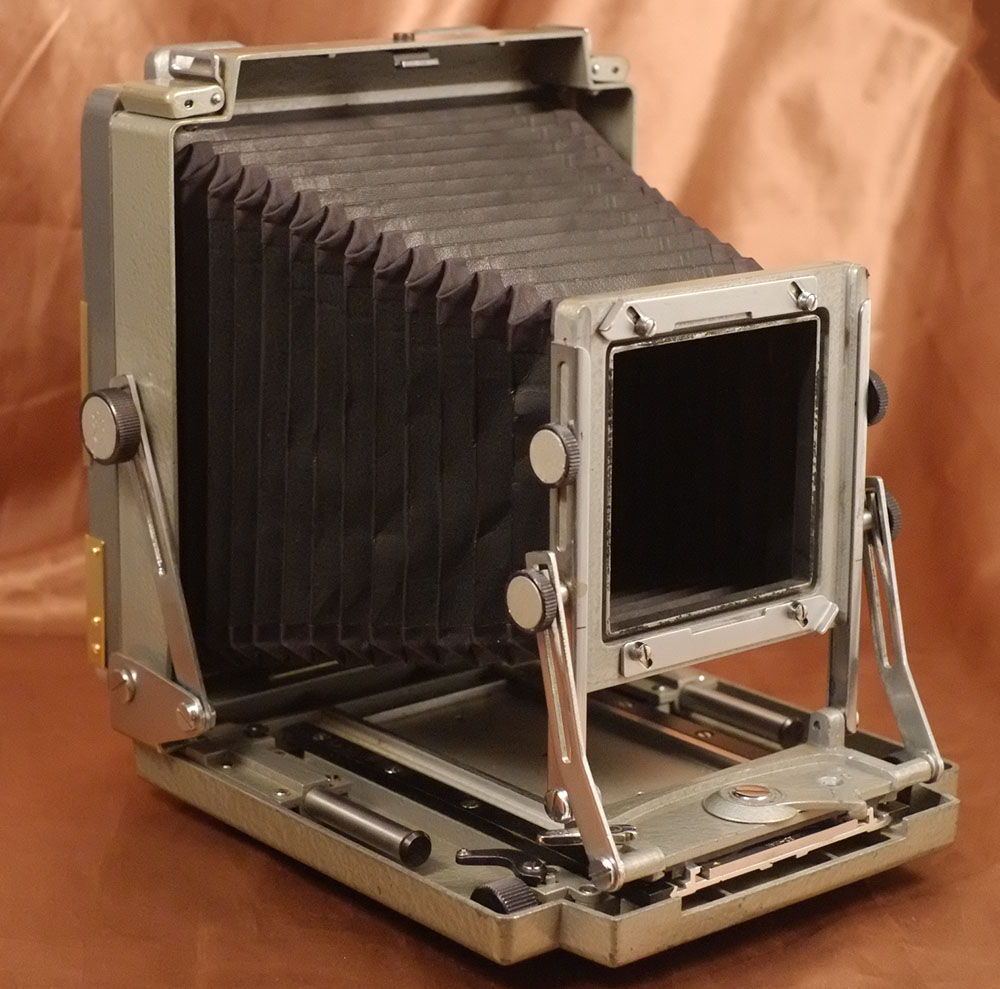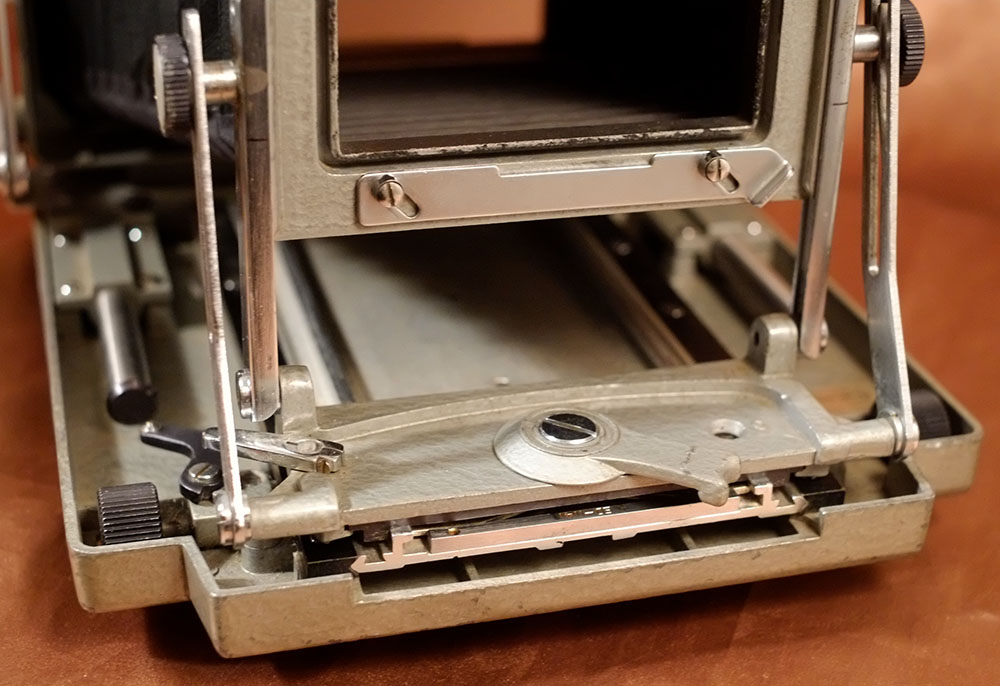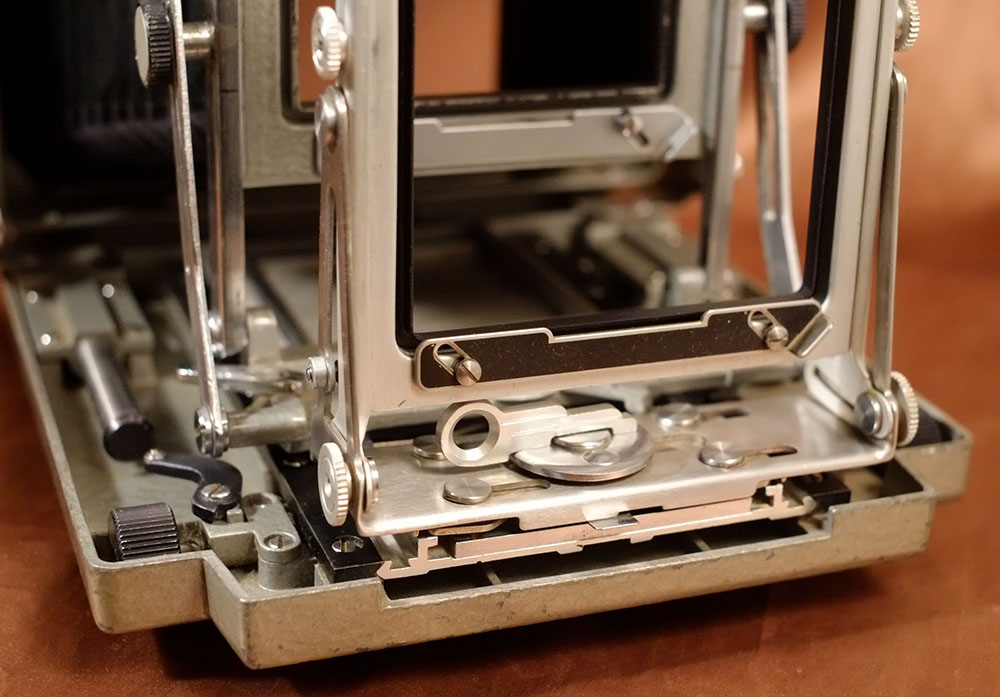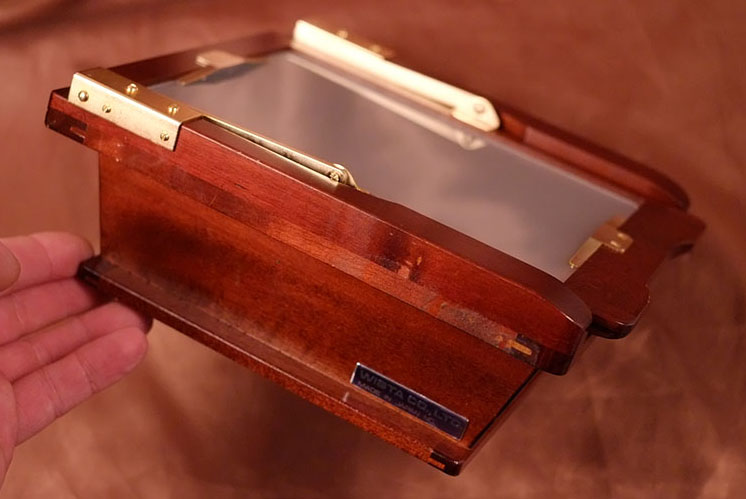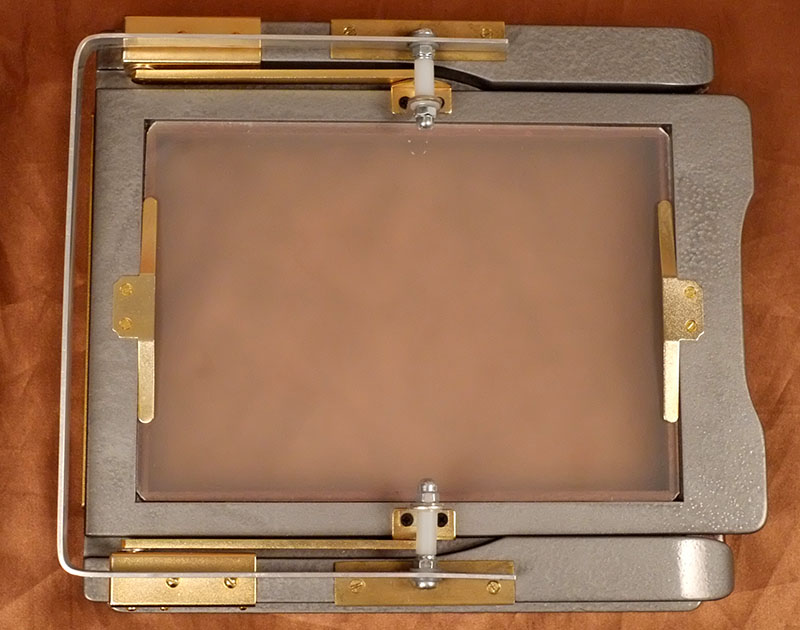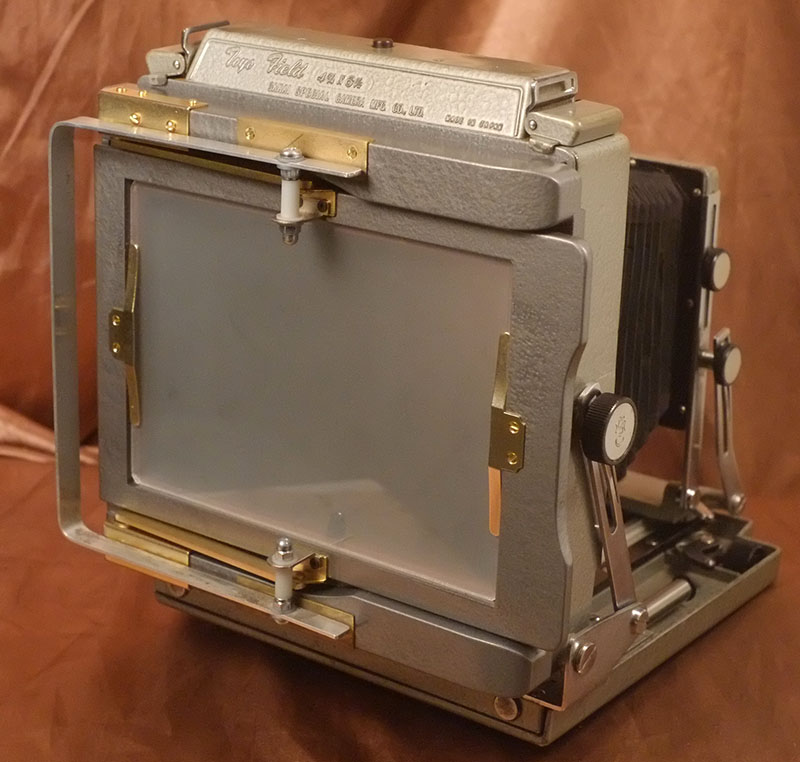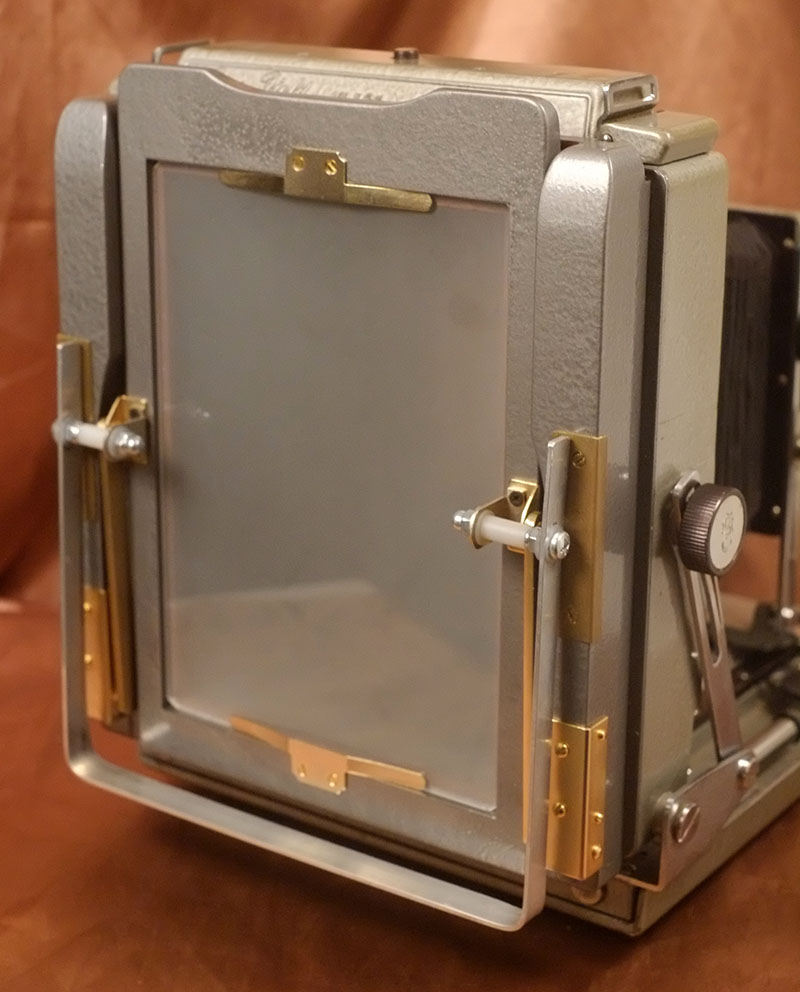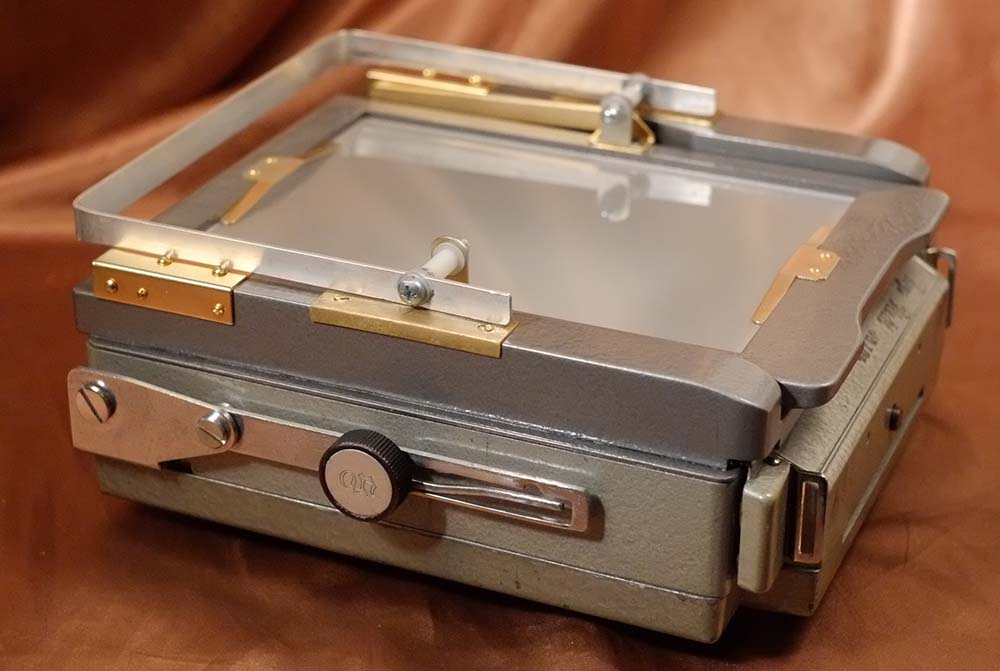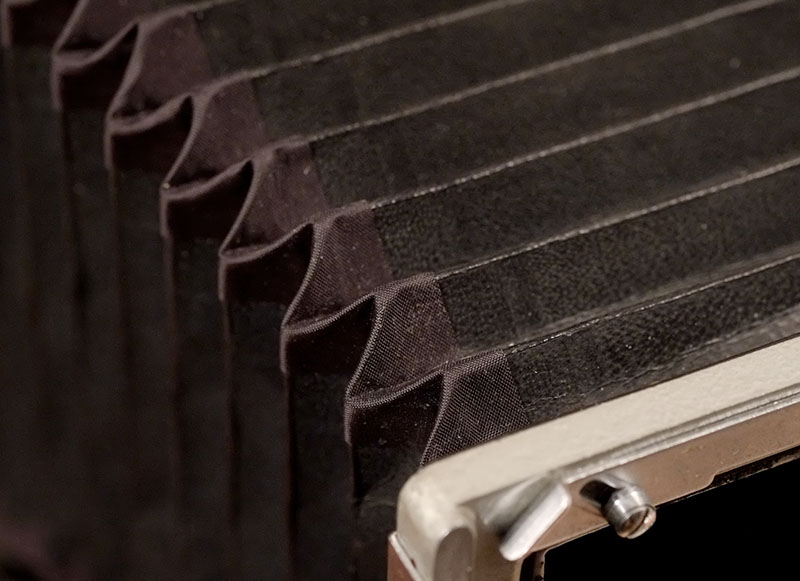© Joe Harrigan 2017
There are many options for 5×7 film holders including wood, older plastic, modern plastic and others. There are advantages and disadvantages but any type can be used with success. I have used most types and currently use 5×7 wood and modern plastic holders for different purposes.
Wood Film Holders:
Wood film holders are a reasonable option and should be considered. However you must choose your wood film holders with care. Many of these older wood holders are heavily used and abused and need to be retired. I look for two specific things when seeking good usable wood film holders. First I look very carefully at the lower corners where the film holders slide into the camera back and often show significant wear. If the corners are nice and sharp and retain their original square form then they pass this initial inspection. Wood film holders with heavily rounded corners are fit for retirement or parts use in my opinion. Secondly I look closely at the light trap bar. Very old holders were made with wood light trap bars. I do not use this type simply due to the fragile thin wood in this area. I specifically seek out the holders that have metal light trap bars. There are many out there and several options to choose from that are mainly wood with metal light trap bars. It is not impossible to find good quality wood film holders with squared corners and metal light trap bars.
My personal first choice for this type of film holder are the Agfa or Ansco 5×7 wood film holders with metal light trap bars. Again be careful looking for these as the older versions were made with wood light traps and (in my opinion) are best to be avoided. Not to say these type will not work because they can work fine, I simply choose the metal light trap versions for peace of mind. Wood 5×7 film holders are also lighter than modern plastic versions. I weighed one of my Agfa film holders and it came in at 8.7 ounces. The Agfa and Ansco 5×7 holders are also shorter than modern plastic 5×7 film holders and use a dark slide that I highly prefer with a metal handle and offset pulling tab that is very easy to grab and use. There are no fiddly wire handles on the dark slides that flip such as on the early plastic 5×7 film holders.
Kodak also made high quality wood 5×7 film holders with metal light trap bars and are another option. One other point to mention is the color of the film holders can help indicate the vintage. The very old Kodak holders are natural wood and later versions, as well as the Agfa/Ansco are black painted wood. Some of the really old 5×7 holders were made to fit specific cameras so may not work with a modern type 5×7 back.
Of course you also need to make sure the wood holders are not warped because making a light tight connection requires a flat film holder. I don’t find many wood holders under 8×10 with any warp. Most of these were made in the middle century or earlier and they had access to very fine straight grain woods. Most of these film holders were made with the highest quality cuts and have stayed true through time. The largest problem with wood film holders might be sticky dark slides. Often the slides are difficult to use because they don’t slide into the holder very easily. Most of the time this is easily remedied with a proper cleaning of the dark slides. They are often caked with dirt and a simple degreasing and cleaning makes them work like new again. You could also polish the plastic and make them look brand new if desired. Please don’t ever put oil or wax on them it simply gunk’s up the dark slide slot. Clean them! Try not to look at the crud that comes off. I degrease them with orange cleaner or ammonia and water then wipe them down with soapy water after, especially the edges where they make contact into the wood holder.
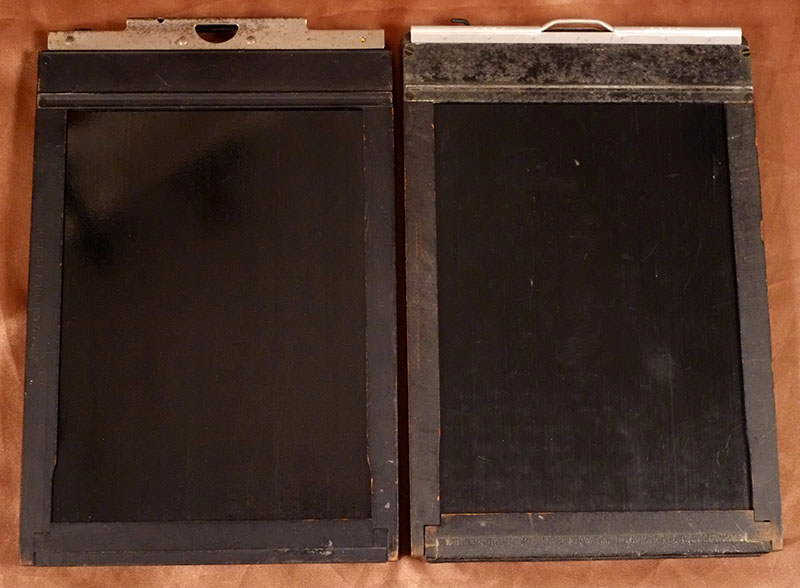
Two wood film holders Agfa/Ansco on the left and Kodak on the right.
Early Plastic Film Holders:
The second basic choice for film holders are the early plastic film holders. These can be defined by the two significant models readily available, Fidelity Deluxe and Lisco Regal brands. These can make excellent usable film holders and are fairly abundant. These two styles were also made with square corners and it is best to inspect the lower corners for wear when choosing these type. There are many out there that have been used so many times the lower corners are well rounded over. Sometimes you can see the lower area is so worn the metal shows through and these are best avoided. The weight of Fidelity Deluxe 5×7 holders is around 9.5 ounces and a Lisco Regal 5×7 weighed in at 9.3 ounces. Fidelity Deluxe 5×7 holders can be quickly identified by the cross hatch pattern in the plastic that is absent on the newer Fidelity Elite holders.
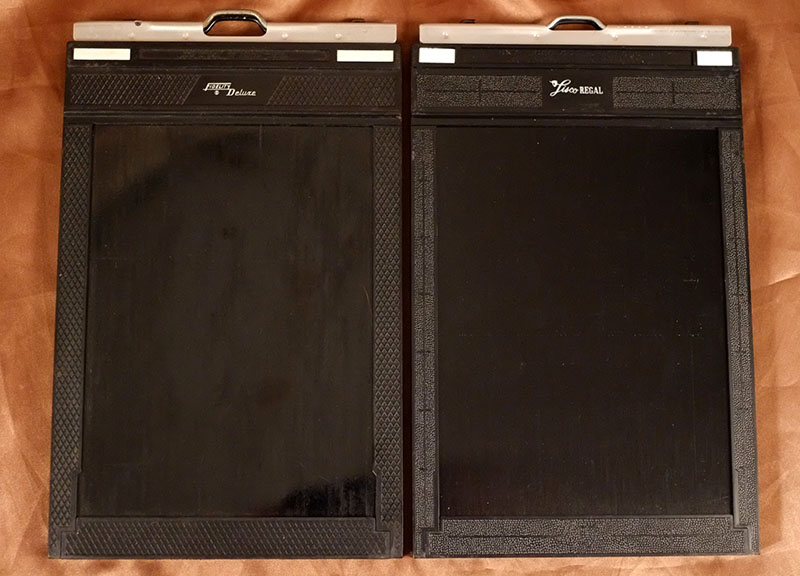
Early plastic film holders Fidelity Deluxe and Lisco Regal
The main improvement with more modern Fidelity Elite and Lisco Regal II film holders was an anodized aluminum film septum (and a different dark slide). Most of the wood and early plastic holders use a simple spray painted septum which can lead to flaking paint etc. The situation is easily cured by flaking off any loose paint and touching it up with matt black paint. I find a paint pen can work fine if you wipe it down with a piece of cotton or dab it as it dries to temper the gloss. The best cure is to remove the septum entirely and hit it with fresh paint. This is easily done to wood holders where the septum is sometimes a 5×7 film sheath insert that can be pulled out. With plastic holders you might need to tape them off if you want to re-spray the septum. If you are bad at even coating please do not do this you need to hit them with the thinnest even coat possible. It is possible and I have found some late model Fidelity Deluxe holders with anodized septums. Online some folks sell what they call white top Fidelity Deluxe. These are probably Fidelity Deluxe holders with modern Fidelty elite dark slides added. The slides for each are the same dimensions.
Modern Plastic Film Holders:
The third choice for 5×7 film holders is of course the most modern Fidelity Elite and Lisco Regal II 5×7 film holders. These models were made with rounded lower corners and can be easily identified by this. Again I look closely at this area to determine the amount of use the holder has seen. These are generally accepted as the best option for 5×7 film holders and as such are the most expensive (excepting modern wood holders). These were made for quite a few years but seem to rarely show up for sale and can be expensive when they do show up. The above comment about the septum deem them the best choice and newest (cleanest) doesn’t hurt.
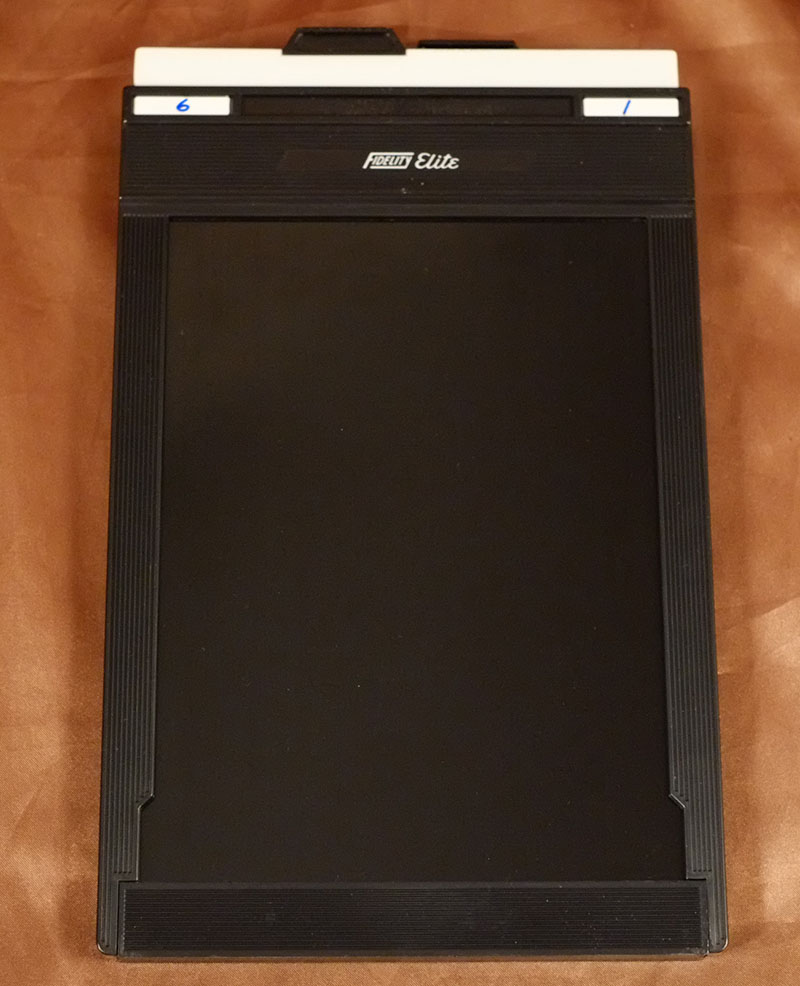
Fidelity Elite 5×7 film holder
Other Film Holders:
Finally there are other options for film holders. The ones that come to mind are older full metal holders made by Alkon. These can be found and are often in good shape but I would imagine they weigh a bit more than other film holders. I do not have one to weigh so I cannot provide the exact weight of the Alkons. Other options are modern wood made film holders. Again these are made with wood and metal light trap bars. I would never buy one that had a wood light trap bar it is simply too fragile in this area in my opinion. The modern wood film holders are extremely expensive so in my opinion would be best to look for modern plastic versions. The holders do fill a void and may be the best option in the future as 5×7 plastic film holders are no longer produced.
One other type holder I can think of is the book form holders made for dry glass plate cameras. I do use this type of holder for my ulf camera but they are very heavy and generally not the best option for shooting 5×7 film. My ulf book plate holders require sheets of glass inside to fill the area where the glass plate would go when shooting film so weight is substantial. These can be used for wet plate work but the chemistry will rapidly deteriorate the wood, or so I have been told.
I certainly missed one but lastly there were special slotted film holders made to fit the Graflex SLR type cameras. Most of these you find will be glass plate holders but there were some made specifically for film. If you have a Graflex 5×7 SLR you really only have one choice, unless you modify the camera back and that is to use the wood Graflex slotted film or plate holders.
If you find glass plate holders for the Graflex or any other 5×7 glass plate holder you can use what is called a film sheath to use the plate holder for film. The film sheath is a thin aluminum insert put into the plate holder to accept film. I have found in the 4×5 size that old graflex wood 4×5 film holders used the same sheaths. You can cannibalize graflex 4×5 wood film holder to get the film sheaths to use in plate holders. I do not know if the same could be said for the 5×7 size but maybe?
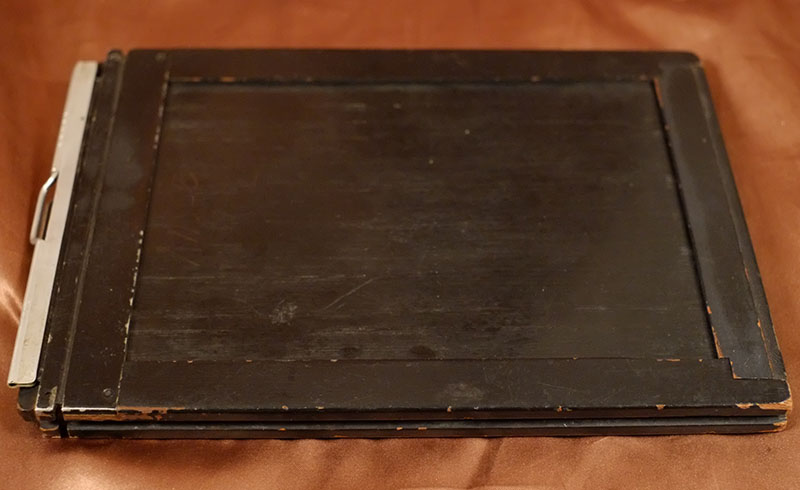
Slotted 5×7 Graflex film holder for Graflex SLR cameras.
Fidelity Elite are my film holder of choice for 5×7 but Lisco Regal II are virtually identical. I do use the Agfa-Ansco wooden film holders for litho film. I often shoot litho type film in overcast situations for silver or alternative process printing. The wood holders make quick identification out in the field and I only load them with this type film. I never have issues with these wood holders they have been cleaned and work very well.
To Identify my films out in the field I use a piece of masking tape over the white side slides of the film holders. This tape identifies the holder as loaded and I write on it the type of film loaded. Sometimes I use different colored tape to identify each film. I always put this to the far side of the holder and makes quick identification in the field of film ready to expose. After the images are exposed I turn the slide black side out and put my tape over the middle of the holder with any notes for development. Film holders with no tape are empty. This basic system makes it easy to know what holders are loaded, which are already exposed and which are empty. I ignore the dark slide metal traps that prevent the slide from being pulled. They can’t be relied on to stay in position and tape adds another element to keep the slides intact during transport. I have had 4×5 dark slides on fidelity elite holders slide out in the trunk of a car! Never again this film is too expensive to waste like that.
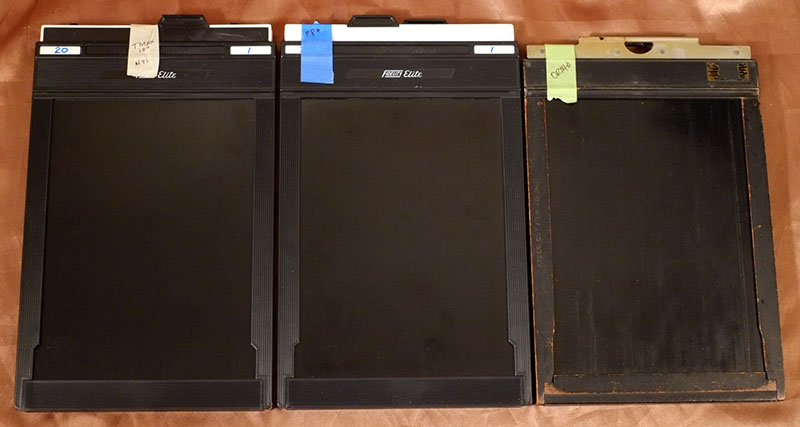
My tape system on the left exposed tmax, unexposed fp4+ and unexposed ortho film. Note the size difference of the wood film holder!
Finally it is my goal to keep my expensive film holders in excellent condition. One great way to do this is the install a bail on your camera back. Film holders take the most abuse when sliding them into the camera back. This is especially true if you have a metal 5×7 camera and wears out the lower corners of the film holders. A bail back, which holds the camera back open eliminates most wear associated with inserting the holder into the camera back. I have never understood modern cameras that do not have bail backs. A bail can be added to almost any camera back and weight is minimal. These are mandatory for me and I add a bail to every camera I operate. Lastly common sense for dust is to keep your film holders – loaded or not in sealed plastic bags to keep dust out.
Honestly it is surprising that nobody has improved the film holder in modern times. They are heavy and comprise most of the weight in my light weight 5×7 kit. Mido made some terrible thin film holders for 4×5 many years ago. Surely someone could design a thinner lighter film holder for 5×7 and other formats. I guess there is a reason film holders are the way they are. They work and if cared for can be counted on for years.

